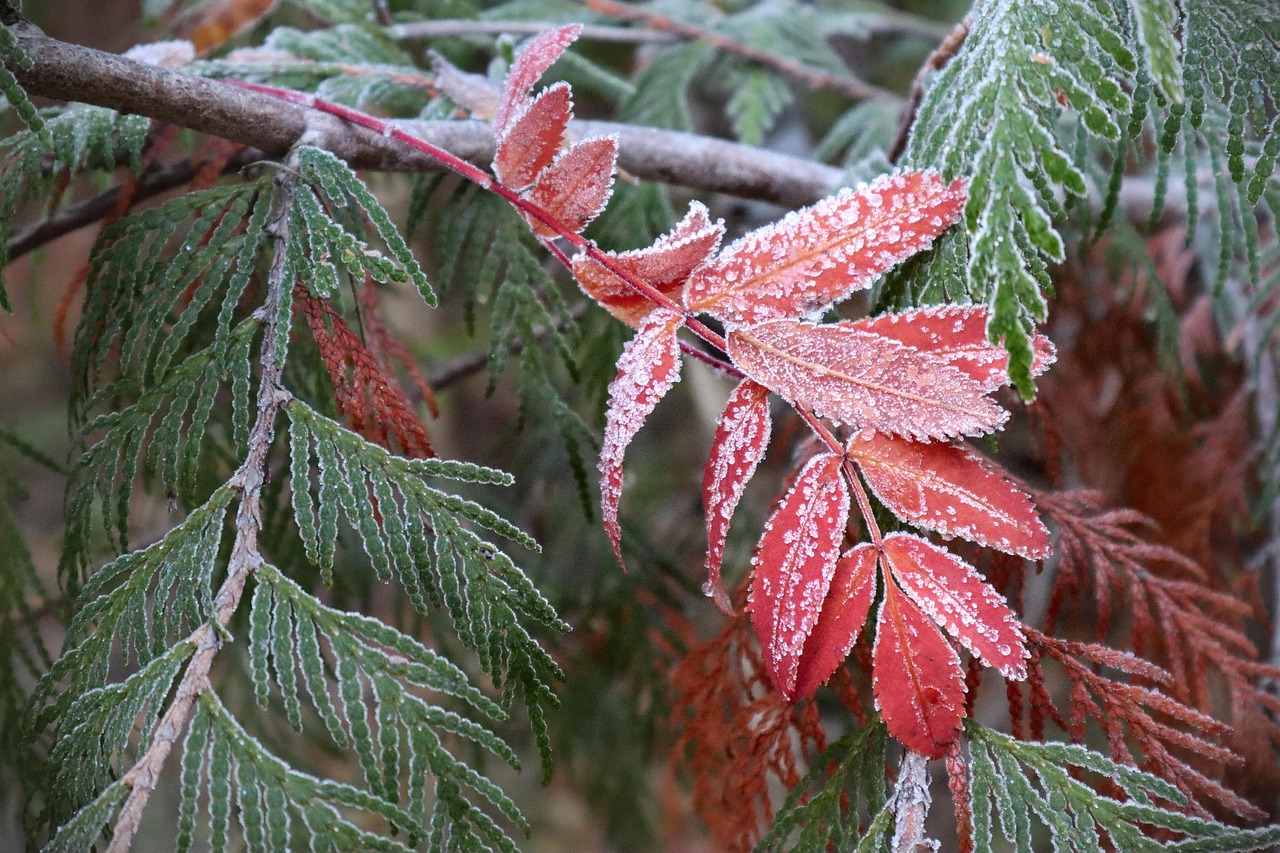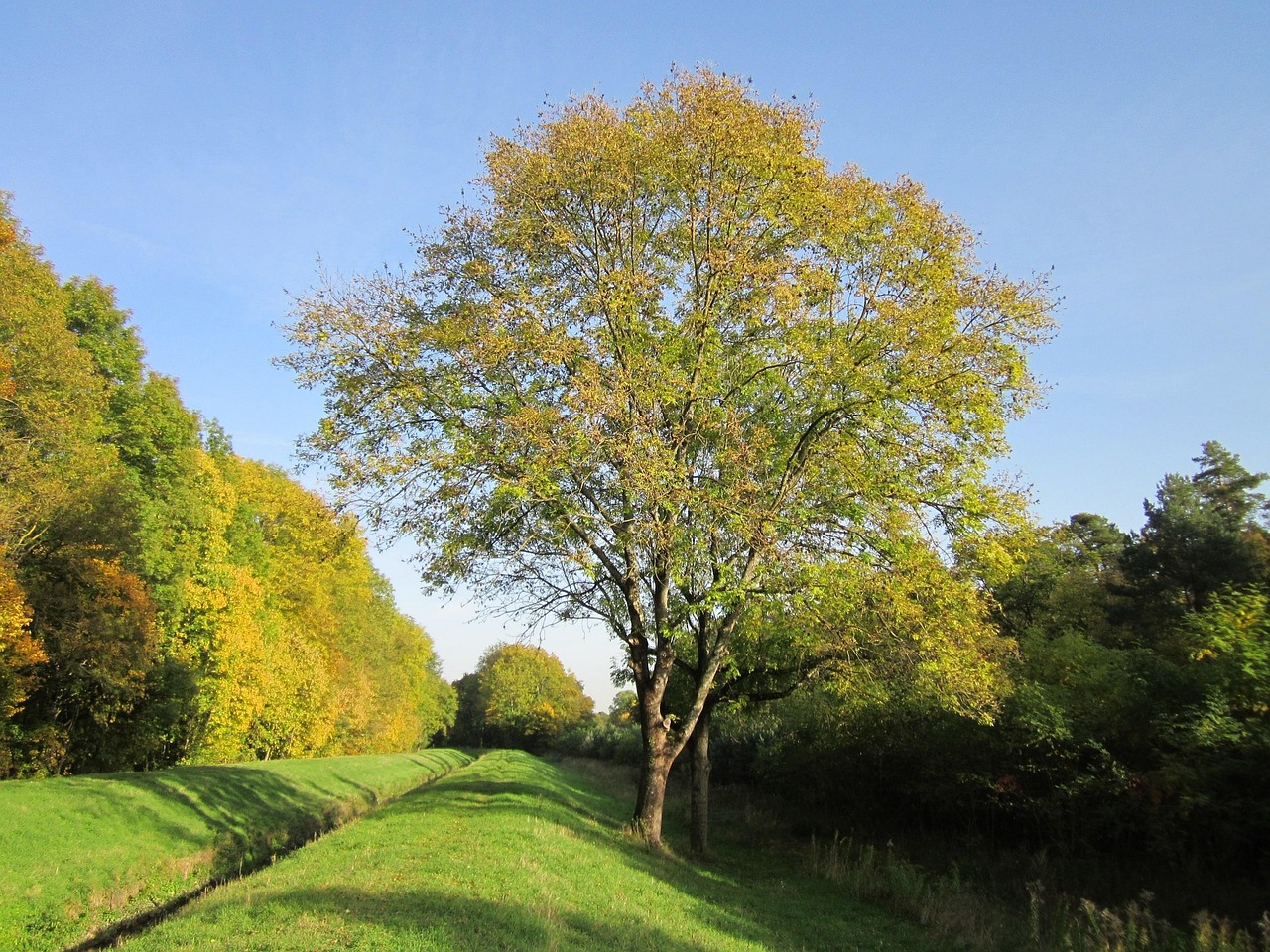Urbanite ash trees generally exhibit a moderate to fast growth rate in city plantings, often thriving in urban environments due to their adaptability. Factors such as soil quality, water availability, and maintenance practices significantly influence their growth. When properly cared for, these trees can reach heights of 40 to 60 feet within a few decades, enhancing urban landscapes.
The Urbanite Ash tree exhibits a moderate growth rate in city plantings, typically ranging from 1 to 2 feet per year. Factors such as soil quality, water availability, and urban stressors can influence its growth, making careful site selection essential for optimal development.
Understanding Urbanite Ash Trees
The Urbanite Ash tree is a popular choice for urban landscapes due to its resilience and adaptability. These trees are known for their ability to thrive in compacted soils and urban environments where other species may struggle. Their growth rate is an essential consideration for city planners and landscapers aiming to enhance green spaces in urban areas.

Urbanite Ash trees belong to the Fraxinus genus. They are typically selected for their aesthetic appeal and environmental benefits. They provide shade, improve air quality, and contribute to biodiversity. However, understanding their growth rate is crucial for successful urban planting.
Factors Influencing Growth Rate
Several factors can affect the growth rate of Urbanite Ash trees in city settings. Key elements include:
- Soil Quality: Nutrient-rich, well-draining soil promotes healthy root development.
- Water Availability: Regular watering during dry spells is essential for growth.
- Urban Stressors: Pollution, compacted soil, and limited space can hinder growth.
- Sunlight Exposure: Adequate sunlight is necessary for photosynthesis.
- Pest and Disease Management: Keeping trees healthy by managing pests ensures better growth.
Growth Rate Comparisons
To place the growth rate of Urbanite Ash trees in context, it is helpful to compare them with other common urban tree species. The following table illustrates the average growth rates of various trees suitable for city planting:

| Tree Species | Average Growth Rate (Feet per Year) | Ideal Soil Type |
|---|---|---|
| Urbanite Ash | 1 – 2 | Nutrient-rich, Well-draining |
| Red Maple | 2 – 3 | Moist, Well-draining |
| Honeylocust | 1 – 2 | Drought-tolerant, Well-draining |
| White Oak | 1 – 2 | Loamy, Well-draining |
The Urbanite Ash tree’s growth rate is comparable to other species, making it a viable option for urban forestry projects. Its moderate growth allows for flexibility in planting locations and landscape design.
Optimal Conditions for Growth
For Urbanite Ash trees to reach their full potential, specific conditions should be met. Here are some optimal conditions that can enhance their growth:
- Choose a location with ample sunlight exposure, ideally six hours or more per day.
- Ensure the soil is well-aerated and free from compaction.
- Implement a regular watering schedule, particularly during dry periods or drought conditions.
- Monitor for pests and diseases regularly, providing treatment when necessary.
- Incorporate mulch around the base to retain moisture and regulate soil temperature.
By meeting these conditions, urban planners can ensure that Urbanite Ash trees thrive in city environments. Proper care not only promotes faster growth but also enhances the overall health of the tree.

The Role of Urbanite Ash Trees in City Ecosystems
The presence of Urbanite Ash trees in urban environments plays a significant role in enhancing city ecosystems. These trees contribute to various ecological benefits, including:
- Air Quality Improvement: Trees filter pollutants and improve overall air quality.
- Temperature Regulation: They provide shade and help reduce the urban heat island effect.
- Biodiversity Support: Urbanite Ash trees offer habitat for various wildlife species.
- Aesthetic Value: Their presence improves the visual appeal of urban areas.
The benefits of planting Urbanite Ash trees extend beyond their growth rate. They serve as vital components of sustainable city planning and can significantly improve the quality of life for urban residents.
Challenges in Urbanite Ash Tree Growth
While Urbanite Ash trees offer numerous benefits, they also face unique challenges in urban settings. Understanding these challenges is crucial for successful growth and longevity. Below are some common obstacles that can affect the health and development of Urbanite Ash trees:

- Soil Compaction: Urban areas often have compacted soils, which can restrict root growth. This limitation can lead to water and nutrient deficiencies.
- Limited Space: Urban environments frequently have restricted planting spaces. This can hinder the tree’s growth potential and overall health.
- Pollution: Air and soil pollution can adversely affect tree health. Pollutants may lead to stress and an increased susceptibility to pests and diseases.
- Water Stress: Inconsistent watering due to droughts or poor drainage can impact growth significantly. Urban trees may not receive adequate moisture during critical growth periods.
- Pests and Diseases: Urbanite Ash trees may be vulnerable to specific pests, such as the emerald ash borer. Effective management strategies are necessary to combat these threats.
Best Practices for Planting Urbanite Ash Trees
To mitigate the challenges faced by Urbanite Ash trees, implementing best practices during planting and maintenance is essential. Here are some recommended practices:
- Select the Right Location: Choose a site with adequate spacing, good sunlight exposure, and minimal competition from other plants.
- Prepare the Soil: Prior to planting, amend the soil with organic matter to improve its structure and nutrient content. This preparation can help alleviate compaction issues.
- Watering Schedule: Establish a consistent watering routine, especially during dry spells. Young trees may require deep watering once a week.
- Mulching: Apply a layer of mulch around the base of the tree. This helps retain moisture, suppress weeds, and regulate soil temperature.
- Pest Monitoring: Regularly inspect for signs of pests or diseases. Early detection is vital for effective management.
The Importance of Pruning
Pruning plays a critical role in maintaining the health and shape of Urbanite Ash trees. Proper pruning techniques can enhance growth rates and improve the overall structure of the tree. Key aspects of pruning include:
- Timing: Prune during the dormant season, typically in late winter or early spring. This reduces stress on the tree and minimizes the risk of disease.
- Removing Dead or Diseased Branches: Regularly check for and remove any dead or diseased branches. This practice not only improves aesthetics but also prevents disease spread.
- Crown Thinning: Thinning the crown allows more light to reach the inner branches and promotes better air circulation, reducing the risk of fungal diseases.
- Avoiding Topping: Topping can lead to structural weaknesses and increased susceptibility to pests. Instead, focus on maintaining the natural shape of the tree.
Urbanite Ash Trees and Climate Adaptability
The adaptability of Urbanite Ash trees to various climate conditions makes them suitable for many urban environments. Understanding their climate preferences can enhance their growth rate and health. Here are some key points regarding their adaptability:
| Climate Zone | Ideal Conditions | Growth Characteristics |
|---|---|---|
| Tropical | Warm temperatures with consistent moisture | Faster growth rates but requires careful water management |
| Temperate | Seasonal variations with adequate rainfall | Moderate growth; ideal for urban landscapes |
| Arid | Drought-resistant with occasional watering | Slower growth; requires mulch and soil amendments |
By understanding the various climate conditions in which Urbanite Ash trees thrive, urban planners can make informed decisions about where to plant these trees. This knowledge ultimately leads to healthier trees that contribute effectively to urban ecosystems.
The Economic Benefits of Urbanite Ash Trees
The inclusion of Urbanite Ash trees in city landscapes not only enhances ecological value but also provides economic benefits. Here are some significant advantages:
- Increased Property Values: Well-landscaped areas with mature trees can increase property values by up to 15%.
- Energy Savings: Trees provide shade, which can reduce cooling costs in summer months, leading to lower energy bills.
- Stormwater Management: Trees help absorb rainwater, reducing runoff and associated urban flooding costs.
- Job Creation: Urban forestry initiatives create employment opportunities in landscaping, maintenance, and tree care.
The economic implications of planting Urbanite Ash trees highlight their importance as part of a broader strategy for sustainable urban development. By recognizing both environmental and financial benefits, cities can prioritize tree planting efforts effectively.
Community Engagement and Urbanite Ash Tree Planting
Engaging the community in tree planting initiatives can significantly increase the success of Urbanite Ash trees in city landscapes. When residents understand the benefits of trees and participate in planting efforts, it fosters a sense of ownership and responsibility. Here are some strategies for effective community engagement:
- Education Programs: Organizing workshops and seminars can help residents learn about the ecological and economic benefits of Urbanite Ash trees.
- Volunteer Planting Days: Inviting community members to participate in tree planting events creates a sense of community and shared purpose.
- Partnerships with Local Organizations: Collaborating with schools, non-profits, and environmental groups can enhance outreach efforts and resource availability.
- Tree Adoption Programs: Encouraging residents to adopt and care for specific trees can lead to better maintenance and longevity.
Urban Planning and Policy Considerations
The successful integration of Urbanite Ash trees into city landscapes often relies on supportive urban planning and policies. City planners must consider several factors to facilitate tree growth and sustainability:
- Tree Canopy Goals: Establishing specific tree canopy coverage goals can guide planting efforts and resource allocation.
- Zoning Regulations: Ensuring that zoning laws encourage tree planting and protect existing trees can create a more favorable environment for Urbanite Ash trees.
- Incentives for Property Owners: Providing tax credits or grants for property owners who plant and maintain trees can stimulate participation.
- Sustainable Landscaping Guidelines: Developing guidelines that promote native planting and sustainable practices can enhance the overall urban ecosystem.
The Role of Technology in Urban Tree Management
Modern technology plays a crucial role in the management and care of Urbanite Ash trees. Utilizing various tools and systems can facilitate better monitoring, maintenance, and growth tracking. Consider the following technological advancements:
- Tree Inventory Software: Maintaining an up-to-date inventory of urban trees helps city officials track species, health, and growth rates.
- Drones and Aerial Imaging: Drones can be used for aerial assessments of tree health, identifying areas that may require attention.
- Mobile Apps for Citizens: Apps that allow residents to report tree health issues or participate in monitoring efforts can enhance community involvement.
- Soil Sensors: These devices measure soil moisture, temperature, and nutrient levels, providing valuable data for tree care strategies.
The Future of Urbanite Ash Trees
The future of Urbanite Ash trees in urban environments appears promising, especially as cities increasingly recognize their value. However, ongoing research and adaptation are necessary to ensure their success. Important areas of focus include:
- Genetic Research: Developing disease-resistant varieties through genetic research can help combat threats like the emerald ash borer.
- Climate Resilience Studies: Researching how Urbanite Ash trees respond to changing climate conditions will inform planting strategies.
- Urban Biodiversity Initiatives: Promoting biodiversity by planting a variety of tree species alongside Urbanite Ash can create a more resilient ecosystem.
- Long-term Monitoring Programs: Implementing programs to monitor tree growth, health, and urban effects can provide critical data for future planning.
The Benefits of Diverse Tree Planting
Diversity in urban forestry is essential for creating resilient ecosystems. While Urbanite Ash trees are beneficial, incorporating various species can lead to greater ecological stability. Here are some benefits of diverse tree planting:
| Benefit | Description |
|---|---|
| Disease Resistance | A diverse range of species reduces the risk of widespread disease affecting the entire canopy. |
| Ecosystem Services | Diverse species provide varied ecosystem services, such as different types of shade, habitat, and food sources for wildlife. |
| Aesthetic Appeal | A mix of species enhances the visual landscape and provides seasonal interest with varied blooming times and colors. |
| Soil Health | Diverse root systems contribute to improved soil structure and nutrient cycling. |
The promotion of diverse tree planting strategies alongside Urbanite Ash trees not only benefits urban environments but also supports a more holistic approach to urban forestry. This balance is crucial for fostering sustainable, healthy city landscapes for future generations.
Future Research Directions for Urbanite Ash Trees
As urban environments continue to evolve, ongoing research into Urbanite Ash trees is essential. Several key areas warrant further exploration:
- Pest Management Strategies: Research into biological control methods and integrated pest management can help mitigate the threats posed by pests like the emerald ash borer.
- Growth Rate Variability: Studying how different environmental factors affect the growth rates of Urbanite Ash trees can provide insights into optimizing planting strategies.
- Urban Climate Adaptation: Investigating how Urbanite Ash trees adapt to changing climate conditions will inform future planting decisions and resilience strategies.
- Soil Remediation Techniques: Exploring innovative approaches to improve soil health in urban settings can enhance the growth potential of Urbanite Ash trees.
Community Benefits Beyond Aesthetics
The presence of Urbanite Ash trees in cities goes beyond mere aesthetics. These trees contribute significantly to community well-being and social cohesion. Here are some community benefits:
- Enhanced Mental Health: Access to green spaces and trees has been linked to improved mental health outcomes, reducing stress and anxiety levels.
- Social Interaction: Parks and green spaces encourage social gatherings, fostering community ties and interaction among residents.
- Educational Opportunities: Urban forests serve as outdoor classrooms, providing hands-on learning experiences about ecology and the environment.
- Cultural Significance: Trees can hold cultural value, representing heritage and identity for communities.
Policy Frameworks Supporting Urban Forestry
Effective policies are crucial for promoting urban forestry initiatives that support Urbanite Ash tree growth. Policymakers should consider the following frameworks:
- Urban Forest Management Plans: Developing comprehensive management plans that outline goals, strategies, and responsibilities can lead to more effective tree management.
- Funding and Grants: Allocating funds for tree planting and maintenance can incentivize local governments and communities to engage in urban forestry efforts.
- Public Awareness Campaigns: Educating the public about the benefits of trees can increase community support for urban forestry initiatives.
- Collaborative Partnerships: Fostering collaborations between governmental agencies, non-profits, and private stakeholders can enhance resource sharing and project success.
Final Thoughts
The Urbanite Ash tree stands out as a valuable asset in urban landscapes. Its moderate growth rate, adaptability to city environments, and numerous ecological benefits make it an ideal choice for urban plantings. However, successfully integrating these trees into city planning requires careful consideration of various factors, including soil quality, pest management, and community engagement.
As cities continue to develop and face environmental challenges, prioritizing Urbanite Ash trees within urban forestry strategies is essential. These trees not only enhance the aesthetic appeal of urban environments but also contribute to improved air quality, increased property values, and enhanced community well-being.
The future of Urbanite Ash trees depends on ongoing research, community involvement, and supportive policies. By recognizing their multifaceted benefits, cities can create healthier, more sustainable environments for current and future generations. Investing in the growth and care of Urbanite Ash trees will yield dividends in ecological health, economic stability, and social cohesion.
Through collaborative efforts, innovative practices, and a commitment to community engagement, the vision of vibrant urban forests featuring Urbanite Ash trees can become a reality, enriching urban life for all.
